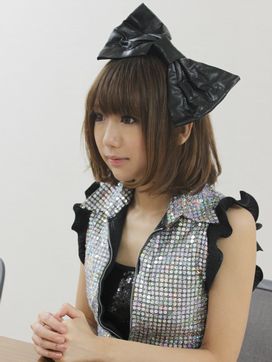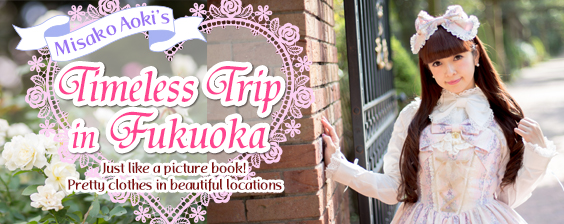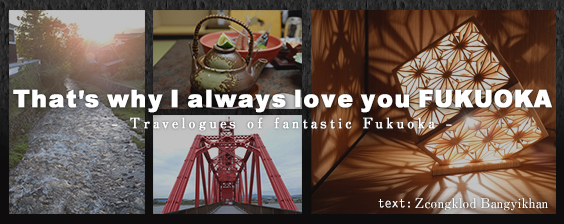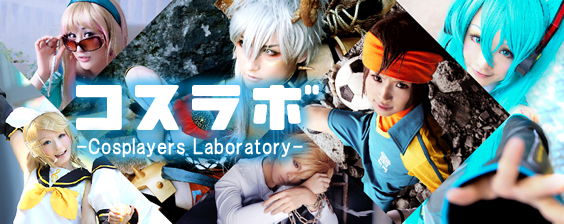[ICON] Julie Watai - Gifted Creator and World Renowned Hard-Core Otaku(1/3)
Previous | Next

Otaku culture is a Japanese phenomenon that has caught the world’s attention, and Julie Watai continues to express her view of the world through this unique culture as a photographer, musician and if the occasion demands, an idol.
Her photographic collection titled "SAMURAI GIRL," which expressed the Japanese otaku of the time, went on sale in 2005 and sold 1.2 million copies worldwide, drawing attention to her as a photographer. Showing her range of talents she also performs as a chiptune artist and idol. The otaku culture of Akihabara has become the thrust behind the advance of Japanese culture, and the demand for her talents has increased accordingly.
While being a self professed otaku, she has the ability to focus on what mainstream overlooks. How is she able to do this? In this interview we try to find out what makes this 32 year old gifted hard-core otaku creator, Julie Watai tick.
Her photographic collection titled "SAMURAI GIRL," which expressed the Japanese otaku of the time, went on sale in 2005 and sold 1.2 million copies worldwide, drawing attention to her as a photographer. Showing her range of talents she also performs as a chiptune artist and idol. The otaku culture of Akihabara has become the thrust behind the advance of Japanese culture, and the demand for her talents has increased accordingly.
While being a self professed otaku, she has the ability to focus on what mainstream overlooks. How is she able to do this? In this interview we try to find out what makes this 32 year old gifted hard-core otaku creator, Julie Watai tick.
The publishing of "SAMURAI GIRL" was the genesis of her unique style
asianbeat (ab): Your work covers a variety of styles. What are your main activities at the moment?
Julie Watai (Julie): Recently it is nearly all photography, but I do some music too.
Julie Watai (Julie): Recently it is nearly all photography, but I do some music too.
ab: What about the idol Amano Ai?
Julie: I created Amano Ai as a fictitious idol. My work is as a culture creator, and I create anime, idols, games and music from the pop culture of Akihabara and Shibuya, mashing them up into my own creations. As I mentioned before Amano Ai is a fictitious idol I created, but she has appeared in gravure magazines and has released 5 DVDs, and been invited to an event in the hallowed otaku store Ishimaru Denki. So I am involved with such real activities, but I have mixed different cultures to create the content for the idol Amano Ai, so I hope you can understand that Amano Ai is an idol created by Julie Watai (lol).
Julie: I created Amano Ai as a fictitious idol. My work is as a culture creator, and I create anime, idols, games and music from the pop culture of Akihabara and Shibuya, mashing them up into my own creations. As I mentioned before Amano Ai is a fictitious idol I created, but she has appeared in gravure magazines and has released 5 DVDs, and been invited to an event in the hallowed otaku store Ishimaru Denki. So I am involved with such real activities, but I have mixed different cultures to create the content for the idol Amano Ai, so I hope you can understand that Amano Ai is an idol created by Julie Watai (lol).

ab: What led you to arrive at your current style?
Julie: In my teens I was just a regular idol. I belonged to an agency and toed the line doing whatever work they gave me. But I was always a bit of an otaku, and at the office I would draw pictures, and the agency “did me a favor” by not paying me for any otaku stuff. That was what it was like. I wanted to move in a different direction so I quit the agency and went to Italy to study art. It was there that I published my works and in the process I thought that I could create something using myself as a medium. That is how I ended up being the otaku I am today.
ab: So you are saying that publishing the photographic collection "SAMURAI GIRL" was a result of you being in Italy at the time?
Julie: That’s right. However, I didn’t go to Italy purely on my own initiative, there was a reason. When I was in Japan I showed my photos to many different people, but for some reason an Italian publisher liked them, saying that the photos reflected the Japan that they themselves encountered. At the time Murakami Takashi was about the only other person involved in otaku art, so there weren’t many precedents. This is how I got my foot in the door of photographic art, and why I went to Italy. This all happened about 5 years ago.
At the time otaku culture had really not yet materialized and it was a pioneering experiment. These days it is distributed throughout the world and even people overseas are familiar with it.
Julie: In my teens I was just a regular idol. I belonged to an agency and toed the line doing whatever work they gave me. But I was always a bit of an otaku, and at the office I would draw pictures, and the agency “did me a favor” by not paying me for any otaku stuff. That was what it was like. I wanted to move in a different direction so I quit the agency and went to Italy to study art. It was there that I published my works and in the process I thought that I could create something using myself as a medium. That is how I ended up being the otaku I am today.
ab: So you are saying that publishing the photographic collection "SAMURAI GIRL" was a result of you being in Italy at the time?
Julie: That’s right. However, I didn’t go to Italy purely on my own initiative, there was a reason. When I was in Japan I showed my photos to many different people, but for some reason an Italian publisher liked them, saying that the photos reflected the Japan that they themselves encountered. At the time Murakami Takashi was about the only other person involved in otaku art, so there weren’t many precedents. This is how I got my foot in the door of photographic art, and why I went to Italy. This all happened about 5 years ago.
At the time otaku culture had really not yet materialized and it was a pioneering experiment. These days it is distributed throughout the world and even people overseas are familiar with it.
The fusion of Akihabara and Shibuya culture created Aki-Shibu-kei
ab: Where are you based?
Julie: Perhaps I am in Shibuya more than Akihabara. I think the borderline between the so-called Akihabara culture and Shibuya has all but vanished. Looking around me, the teenagers of today watch late night anime and they are not labeled “otaku” like they used to.
Julie: Perhaps I am in Shibuya more than Akihabara. I think the borderline between the so-called Akihabara culture and Shibuya has all but vanished. Looking around me, the teenagers of today watch late night anime and they are not labeled “otaku” like they used to.
 ab: How would you describe the streets of Akihabara and Shibuya?
ab: How would you describe the streets of Akihabara and Shibuya?Julie: It is often said that Akihabara is like an otaku’s bedroom. The image of an otaku’s bedroom is one with posters on the wall, a hugging pillow and lots of 2 dimensional objects. If you go to buildings in Akihabara you will find posters of young girls on the wall, maids on the street – it really is a 'moe' place! Akihabara is like an otaku’s imagination coming to life. And it is a creation completely made in Japan.
In comparison Shibuya is more like a city from overseas with fashion in particular being heavily influenced by the fashions in Paris. But recently people say that Shibuya and Akihabara are becoming similar. Though the character of the two places are different, they are gradually fusing. I think the reason why these two different places are uniting is that an increasing number of the new generation of youth are accepting both styles. I am really looking forward to seeing what kind of place the so called Aki-Shibu-kei kids are going to create.
ab:Is Harajuku different again?
Julie: Yes it is. Harajuku’s street culture has all but disappeared. The small stores that used to be there have given way to large scale stores. Apart from a small number of Gothic-Lolita girls it has died out. It has all been transplanted from the street to Nico Nico Douga and the Internet.
Julie: Yes it is. Harajuku’s street culture has all but disappeared. The small stores that used to be there have given way to large scale stores. Apart from a small number of Gothic-Lolita girls it has died out. It has all been transplanted from the street to Nico Nico Douga and the Internet.
Previous | Next
 Measures and provisions are being taken at various locations in an effort to prevent the spread of the new coronavirus.
Measures and provisions are being taken at various locations in an effort to prevent the spread of the new coronavirus.














